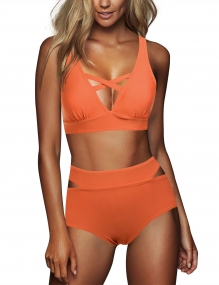Swimsuits and beach suits are part of a suit designed for people involved in water sports or water sports (such as swimming, water polo, driving surfing, water skiing or sunbathing). Swimsuits are worn as underwear in sports such as scuba diving, water skiing and wave boarding. There are a wide variety of modern and stylish swimsuits available on the market, varying in size and quality. In Western culture, men’s swimsuits and beach suits are usually described as boardwalk, jammers, swimming trunks, briefcases or “speedboats”, thongs and g ropes, while women’s swimsuits include single swimsuits, bikinis or thongs. The main end users of swimwear and beach wear markets include men’s, women’s and children’s wear.
The product is classified as casual wear. Over the years, attitudes towards swimsuits and beach suits have changed. Designers are expanding their choice of products because men are becoming more conscious of their appearance, so business is growing. As sports brands become more fashionable, fashion brands also have more sporting features, and the use of swimwear, such as shorts and panties, is increasing. In addition, women’s desire to look fashionable in swimming pools or beaches is increasing demand for swimwear. As a result, designers are regularly updating their swimsuits and beach suits without delay. In addition, fashion elements are increasingly integrated into swimwear, attracting more consumers, especially the new generation. These are the main trends leading to healthy growth in the swimsuit and beach wear markets.
Major drivers in the swimsuit and beach wear markets include relaxation of dress codes, increased interest in body care, social mobility, acceptance of swimming as an ageing leisure pastime, and improved performance of the textile industry. The growth of the beauty and spa industries, as well as the increasing demand for specialty swimwear by women, has also contributed to the development of the swimsuit and beach wear markets. In addition, increased health awareness has led to increased sales of swimwear and beachwear because people want to expose their bodies. Western swimsuit habits have gained momentum in developing countries. However, developing countries in Southeast Asia and China have provided huge growth in this market.
On the other hand, the long-aging demographic structure of developed countries, the special circumstances of some parts of the world and poverty in others, as well as cultural, social and religious barriers, limit the growth of the market for swimwear and beachwear. Europe and the United States are the biggest performers in the swimsuit market. Asian countries like China are experiencing the fastest growth in recent years. Key and niche companies operating in the global swimsuit and beachwear markets include American Apparel, Italy Arena Ltd., Diane Sports Company, perla Group & Co., Ltd., perla Group, Nozone Apparel Co., Ltd., Pao Neill, Inc., p. A., Penland Group Co., Ltd., Sipperry ellis International Co., Ltd., Seik Silver Company, Ltd., Seafolly Company, Seine Swimsuit Company, Tefron Sports Co., Ltd., and pvh Co., Ltd.


